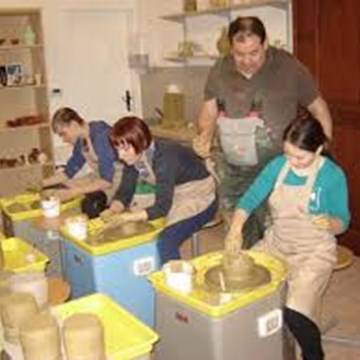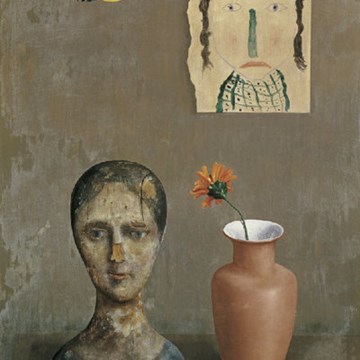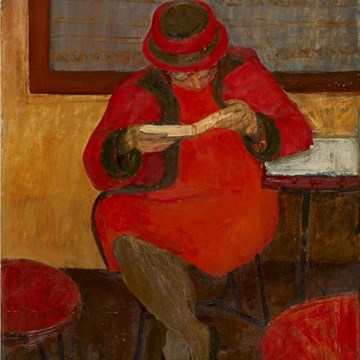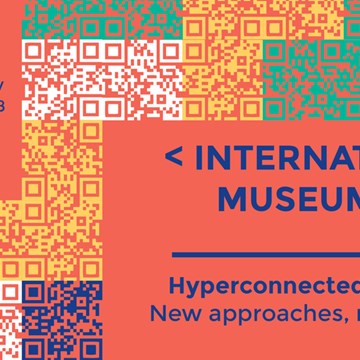PIPILOTTI RIST. Komm Schatz, wir stellen die Medien um & fangen nochmals von vorne an
In Spring 2015, the Kunsthalle Krems presents one of the most comprehensive solo exhibitions to date of Switzerland’s most famous video and object artist, Pipilotti Rist (b. 1962), the “techno-romanticist and utopian philanthropist”(Daniele Muscionico) of the international art scene.
The spectrum of works on exhibit from 30 years of her career ranges from early objects on first-time public display and experimental films from the early 1980s to some of her best-known works and to recent expansive video installations, thus providing a unique insight into Pipilotti Rist’s fanciful universe of moving (in the double meaning of the word) images. Aside from being a reflection of, and on, today's media reality, they are fascinating above all because of their impressive sensuality. Equally engaging the visual, tactile, and aural senses, Rist’s videos do not only activate body awareness, but also encourage looking at the world through different eyes and challenging accustomed views.
Already in her videos from the late 1980s and early ’90s like I’m Not the Girl Who Misses Much (1986), which refer back to music video aesthetics, Rist seeks to break away from the dominant visual regime that becomes apparent mostly in the context of media-promulgated images of femininity. Deliberately introduced disturbances of the image attack the slick perfection of media images while also giving the videos their dream-like character. Another piece like a dream sequence is Rist’s famous video work Ever Is Over All (1997), in which a woman jauntily walks down a sidewalk smashing in several windows of parked cars with a flower-shaped metal rod. Similar breaches of seeming normalcy which may prompt a reconsideration of social role images of femininity also characterize her previously rarely shown videos Anja erweitert ihren Horizont (Anja Broadening Her Horizon, 1995) and Pamela (1997).
The nude female body as a crystallization point of cultural and social taboo is in the focus of pieces like Pimple Porn (1992) and Blood Room (1993/98), in which body and skin reveal themselves as projection surfaces of both organic and emotional inner life, suggesting a fresh look on viewers’ own corporeality.
Rist’s audiovisual installations—such as, for example, Sip My Ocean (1996), Homo Sapiens Sapiens (2005) oder Tyngdkraft, var min vän (Gravity, Be My Friend, 2007)—also prompt the conscious activation of one's personal body awareness. They undercut the detachment of the viewing position and translate it into a dynamical bodily sensation or action in space by inviting viewers to walk across an image projected onto the floor or to watch the videos lying down, by making them projection surfaces of Rist’s enthralling fantasy worlds or creating an environment that the artist completely immerses viewers in.
Rist’s artistic strategy of creating pictorial spaces that viewers can actually step into, combined with the dissolution of the boundary between perception and imagination that is immanent in her videos, also shows in her object-based space installations. Like her “Krems Living Room” which she designed especially for the Kunsthalle exhibition, these define enterable furnished living spaces where filmic projections float above and across the furniture like daydreams, with real and fictitious spaces flowing into one another.
Whether it is these installations conceived as “community spaces” and characterized by the mutual pervasion of everyday situation and virtual image, or her early single-channel videos, Pipilotti Rist’s works always indicate a reflection on the medium of the image, its potency and increasing dissemination in today’s media culture, however, without ever neglecting pleasure, enjoyment, and personal body awareness in contemplating it. As can be gleaned from the about forty object and video pieces from all of the artist’s creative phases that are presented in the Kunsthalle exhibition, it is this unique synthesis that Rist seeks to achieve so as to “find new ways of shaping the world, the exterior as well as the interior world” (Pipilotti Rist).
Curators: Stephanie Damianitsch, Hans-Peter Wipplinger
Exhibitions and events
We don't have anything to show you here.
Activities from this museum
We don't have anything to show you here.












